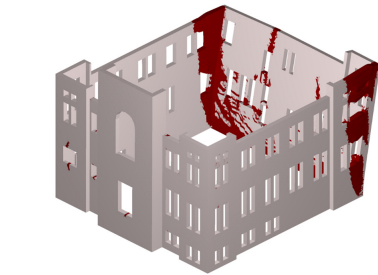Anushka Mukherjee, Andrei Farcasiu, Douglas La Prairie, Tom Morrison, and Bora Pulatsu
i Graduate Research Assistant, Carleton University, Ottawa, Canada, anushkamukherjee@cmail.carleton.ca
ii Graduate Research Assistant, Carleton University, Ottawa, Canada, andreifarcasiu@cmail.carleton.ca
iii Structural Engineer and Founder, Strake Engineering Ltd., St. John’s, Canada, dlp@strakeengr.com
iv Principal Engineer and President, Heritage Standing Inc., Fredericton, Canada, tmorrison@heritagestanding.ca
v Assistant Professor, Carleton University, Ottawa, Canada, borapulatsu@cunet.carleton.ca
ABSTRACT
This research presents computational investigations to predict the overall macro-behaviour of a historic masonry building located in St. John’s, NL, Canada, subjected to wind loading. The process begins with the documentation of the building, where principal geometrical features, construction morphology of the masonry walls, and the sizes and locations of the openings (e.g., doors and windows) are obtained using documentation methods. Continuum-based simulations (also denoted as macro-modelling) are performed following the standard non-linear finite element analysis (FEA) in which the geometrical properties are taken from the adopted documentation approach and automatically transferred into the solid shapes. The non-linear structural behaviour of the large-scale 3D macro-model is evaluated using the Mohr-Coulomb material model with different mesh sizes. The global structural behaviour as well as the most vulnerable sections of the building are identified, taking advantage of the computational efficiency of macro-modelling. Subsequently, a detailed structural analysis based on the discrete element method (DEM) is performed. The DEM-based approach represents brickwork assemblages as a system of discrete blocks in a fully discontinuous setting and simulates the interaction of masonry units at the contact points. Further insights are gained regarding the detrimental effects of existing cracks, which can be explicitly represented in the discontinuum-based analysis. The outcomes of this research highlight the integrated use of continuum and discontinuum-based modelling strategies in conservation engineering.
KEYWORDS: Historic masonry, computational modelling, continuum analysis, discontinuum analysis, structural assessment, structural analysis, collapse mechanisms.
080-Mukherjee.pdf



